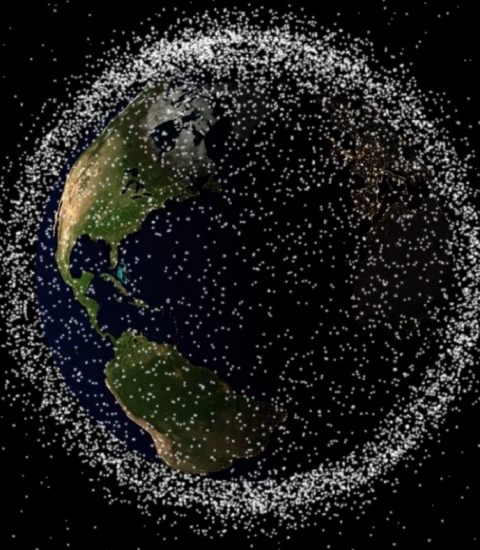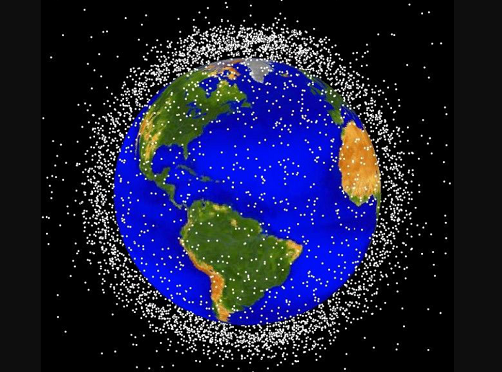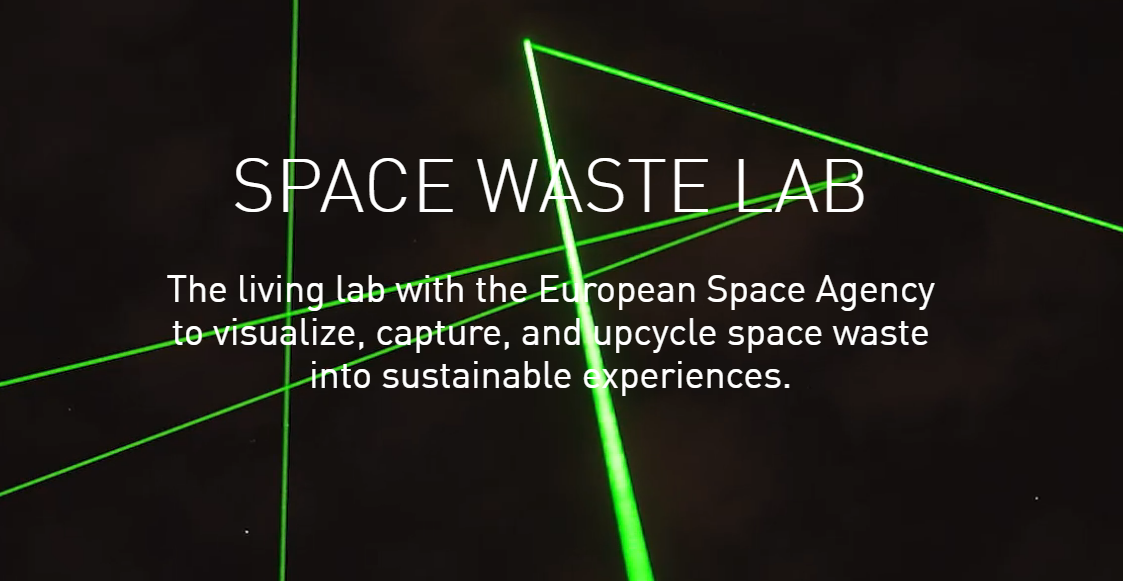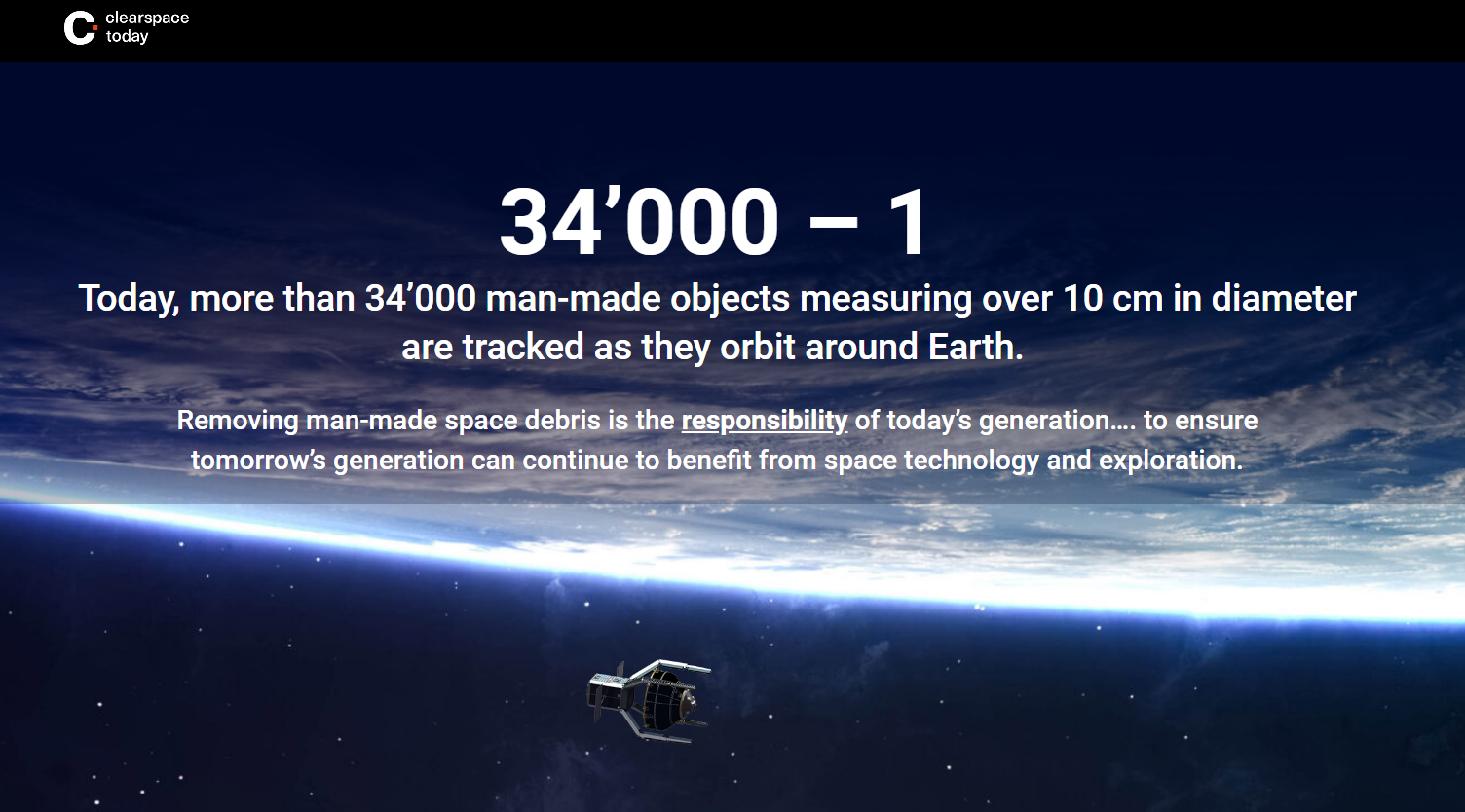
[Author: Carmel McNamara, IOS Press]
Amsterdam, NL – Space debris was the focus of one of EPL's most-read articles last year. The challenge of space debris is an ever-increasing problem that threatens the sustainability of space exploration as orbital congestion increases exponentially. There are currently more than 30,000 items of space junk greater than 10 cm in diameter – and these are only the pieces that can be easily tracked; there are hundreds of thousands more smaller pieces floating around as hazards. The high risk of collision of debris with satellites lends an urgency to new initiatives and smart solutions that can work towards actively removing such objects from lower Earth orbit. Here, we look at two initiatives – from Studio Roosegaarde and ClearSpace – aiming to do just that.
This week saw another historic moment of space exploration get underway as NASA's Perseverance rover began its journey to Mars to search for signs of ancient life and collect samples to send back to Earth. The Atlas V rocket that was used for the launch used two rocket stages, the first of which separated from the second stage after it had burnt up its fuel and fell back to Earth, burning up on re-entry, and putting on a show as it did so (see here). Though, not all rocket stages burn up in this way and instead join the myriad of space debris objects that are already in low Earth orbit.
The laws of space
When it comes to considering whose responsibility is it to clean up space of this junk, it can be seen as the joint responsibility of every spacefaring nation in the interests of all humankind. This is an environmental mission and it is time to clean up our act.
Space law first came into being with the signing of the Outer Space Treaty in 1967, which set out measures to regulate outer-space activities, and numerous other conventions, treaties, recommendations, and guidelines having been agreed on since that time. The UN Office for Outer Space affairs (UNOOSA) is a great resource of information on this topic and its website states: "Space law addresses a variety of matters, such as, for example, the preservation of the space and Earth environment, liability for damages caused by space objects, the settlement of disputes, the rescue of astronauts, the sharing of information about potential dangers in outer space, the use of space-related technologies, and international cooperation."
Further background to international space law is covered in detail in the EPL article mentioned in this post's introduction (an extract of the paper is included at the foot of this post). However, there are no specific international laws covering space debris, as the authors state: "The legal issues of space debris are to some extent covered by existing international space law, which confirms common obligations without creating rules. However, the Outer Space Treaty’s provisions are too generic to deal with the complex problems of space debris."

Active debris removal
It is a strategic goal of the European Space Agency (ESA) to identify technologies for active debris removal. A number of studies have indicated that the numbers of "large and massive objects" in lower Earth orbit has reached a critical density and in order to reduce the number of such objects, a program of remediation measures must be introduced (more detail here). The complexity of space debris will require smart solutions. Two organisations collaborating with ESA on this topic as part of its Clean Space initiative are Studio Roosegaarde and ClearSpace.
Space Waste Lab
Back in January 2019, the studio of Dutch artist and innovator Daan Roosengaarde brought the problem of space debris to the public's attention with a light installation that coincided with the launch of his studio's Space Waste Lab – the aim of which is to visualize, capture, and upcycle space waste into sustainable experiences.The launch event was a spectacular performance which revealed space waste in real-time by directing green beams of light at the space debris floating above the heads of the spectators at an altitute of 20 to 20,000 km. The living lab was supported by experts from ESA and is open to students and visitors to investigate how to upcycle space waste into sustainable products. At the time, Daan Roosegaarde commented: “We need to look at space in a better way. What is space waste, how can we fix it, and what is its potential? Can we use space waste as a source material to 3D print houses on the Moon, or use it to create artificial falling stars [as] opposed to polluting fireworks?" Following the launch event and further ongoing research, a number of concepts are now being validated in terms of technology and feasibility (see the PDF with a number of space waste solutions here).

ClearSpace
In December 2019, the Swiss start-up company ClearSpace signed a debris-removal contract with ESA, tasked with deorbiting a substantial piece of a Vega rocket, i.e. Vega Secondary Payload Adapter (VESPA), that has been in low Earth orbit since 2013. ClearSpace-1 will be the first space mission to remove an item of debris from orbit, planned for launch in 2025, as announced by ESA here. Once captured, the object will be secured and a controlled re-entry of the entire system will be carried out. The satellite will decompose in the upper atmosphere due to heat generated as they re-enter the earth atmosphere at orbital speeds. The microsatellite CleanSpace-1 will be built by a consortium of partners and news was releaseed earlier this month that the build process has started (read more here).

The first steps are being taken to tackle the challenge of space debris!
(Credit for cover image at the top of the page: Space Waste Lab; screenshot from this video)
Watch the video below producd by ESA in 2013 to video illustrate the main challenges regarding space debris:

